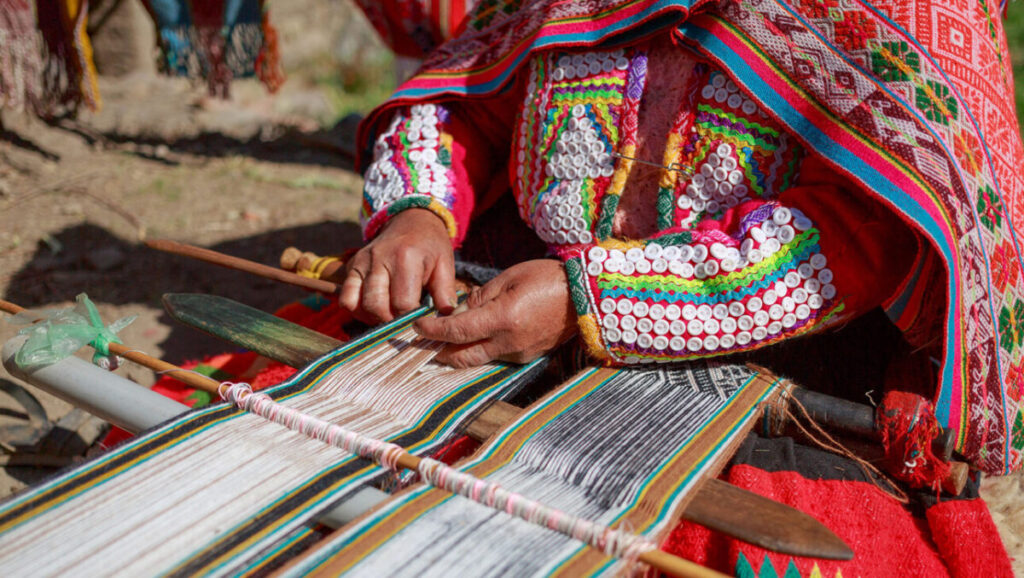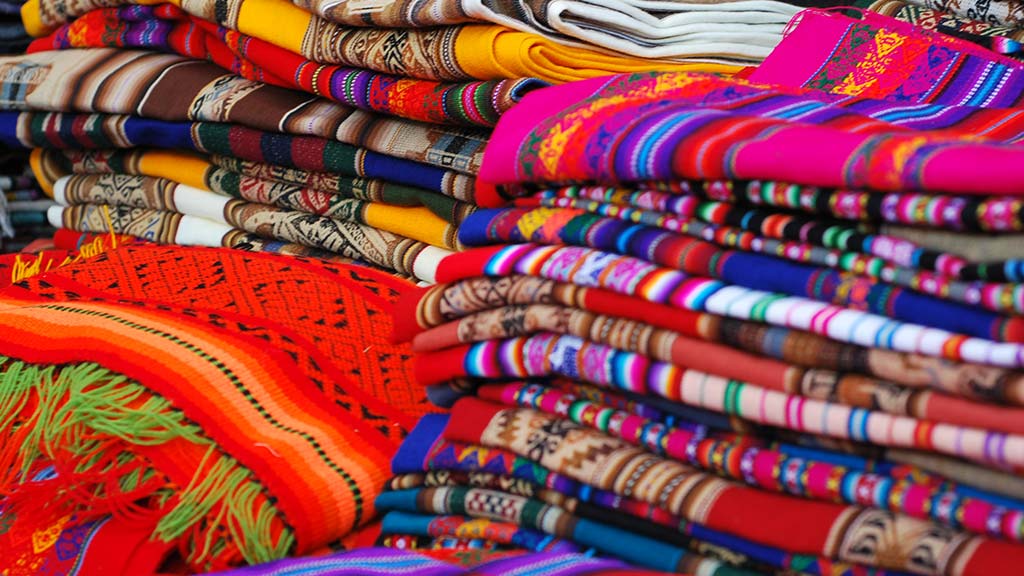Polleras have changed over time, allowing various aspects of indigenous culture to emerge (Will, 2020). Skirts were handmade with natural threads before the European invasion of the Andes in 1532 (Nair, 2017).In today’s world, polleras are made from synthetic printed fabrics imported from China. There are two long black braids in Pollera’s style that are fixed and “authentic,” yet other components are the result of industrial production methods (Wisniowski, 2022). Polleras made from handmade cloth are not valued in Puno and other cities on the Altiplano (Othan, 2010). Polleras fashion trends usually last a year, the price of a garment can drop by more than 50 percent after a year on the market (Nelson, 2021). The majority of Bolivian polleras-women who control the polleras fashion market travel to China to buy fabric (Barbeito, 2022).
The pollera is a wide skirt made of wool bayeta cloth (traditionally woven by hand, but now often manufactured and purchased by machine). The majority of women wear several of these on top of one another, and on special occasions, they may wear up to 10 or more! (Thomson, 2020). Woven multicolored bands (golones) adorn the edges. Polleras are made of different materials, such as cotton or wool and linen, and always have colorful decorative elements. Most of the decorations are embroidered. Flowers and regional animals are among the most common designs (Ban, 2016). According to Murphy, (2019). In Polleras, you will find the word golones, which refers to how it is made: golon, a tapestry technique. It is woven on a narrow belt loom, with brightly-colored geometric patterns created by raising the warp threads in twill weave using multiple heddles. As the geometric patterns are woven in tapestry style, the weft packs down over the warp, making a very durable band. Therefore, weaving cloth is a very time-consuming process. It is therefore common practice to remove the bands from polleras as they age and replace them with new skirts. Polleras are usually very full and gathered, as they are worn one over the other. Multicolored woven bands (golones) adorn the edges.
The (falda) skirt, or pollera style, is one variant of this clothing (Arce, 2017). There is only one major difference between a skirt and a pollera: the latter is embellished in the middle with horizontal tiers; otherwise, both skirts are similar (Tapia, 2017). Despite being more expensive, heavier, and more difficult to wash, the pollera is still the preferred garment for women in Peru’s Altiplano region (Orbegozo, 2017). This bulky gathered skirt represents the Altiplano women’s concept of female attractiveness, which contrasts with the Western ideal of the tall, thin, curvy woman embodied by the Miss Universe (Sharp, 2021). Women wear polleras as an expression of their creative skills and to be appreciated for their beauty, fashion, and originality (Amed & Berg, 2021). Similar to the Western blazer, polleras are a classic icon of elegance(Purs, 2020). Indigenous women from this region wear them as part of their basic wardrobe(Herrera, 2018).
In “pollera style,” women wear a multilayered skirt composed of the external skirt-the pollera-plus five petticoats, a blouse, a cardigan, and a shawl with a broach on the chest (Eicher, 2022).In February, polleras are used for special occasions, such as the Fiesta de la Virgen de la Candelaria (Celebration of the Virgin of Candelaria), (Peru travel, 2020). At more private events, such as weddings, the bride’s mother, grandmother, and mother-in-law often wear polleras, even if the bride does not (Rant, 2021).
Pollera mark their wearers as “India” and as women. Polleras are traditionally made of sheep or alpaca wool and are of thick, wide, loose and gathered fabric(Zapata, 2019). The skirts are usually adorned with a colorful band called Puyto.The Spanish expression mujeres de pollera (polleras-women) literally implies that women are made of polleras or belong to polleras (Velazques, 2017). Polleras-wearers are also known as chola, a term used primarily by Quechua and Aymara Indigenous groups. Polleras-women don’t self-identify as cholas because of the negative stereotypes associated with being Indigenous — “ugly,””dirty,” and “ignorant.” Instead, they say “me visto de chola” (I dress up as a chola) or “me da bien de chola” (I look good as a chola), as if being a chola were temporary and changeable (Wilson, 2009).




